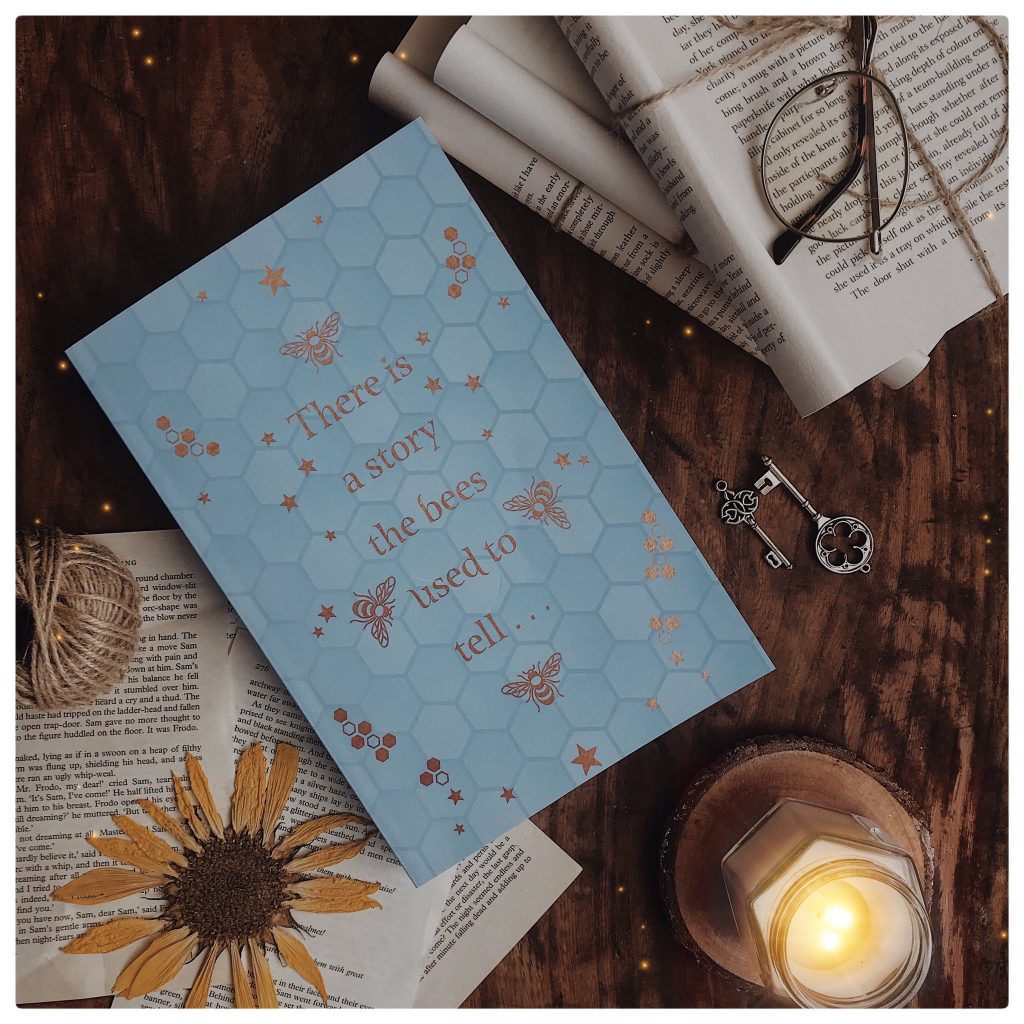There is a story the bees used to tell…
At last, HONEYCOMB is almost ready to hit the shelves! However much you may adore e-books, I can guarantee that this book – tactile, gilded, embossed and gloriously reminiscent of classic Golden Age fairy tale books, with its cover by Sue Gent and internal artwork by Charles Vess – is one you’re going to want to hold.
To celebrate, Hachette are offering UK readers the chance to win this fabulous rose-gold bee pendant!

Click on the link to find out more….
Tempted? Click on the link to pre-order!
Description:
Eerie, dark and opulent, cocooned in silk and shadows, this is a novel unlike any other: a honeycomb built from a hundred cells, each cell a story in its own right. Gorgeously Illustrated by Charles Vess, it follows the tale of the Lacewing King, magical trickster and ruler of the Silken Folk; his misadventures, his treacheries and his pursuit through many Worlds by both the vengeful Spider Queen and the deadly Harlequin. On his journey through the Worlds of the Folk, of the Sand Riders, the Undersea, the River Dream and even the Kingdom of Death itself, he encounters a multitude of characters – a clockwork woman, a watchmaker’s boy, a huntress with a mechanical tiger, an undersea Queen in love with the Moon, a princess who dreams of a library – but none more magical than the bees, the little builders of honeycomb, taking their nectar of dreams to the hive, and spinning them into stories.
As you know, pre-orders don’t just help drive sales; in an increasingly risk-averse industry, they help to ensure that publishers continue to support and commission authors to write more of what you love; so if you’ve enjoyed my Twitter stories and my fantasy work as Joanne M. Harris, please consider pre-ordering HONEYCOMB for yourself, or a friend, or ordering it at your local library.
There’ll be some online events, too, including the chance to win copies of the book, plus bookplates and and signed postcards by Charles – so keep an eye on my Events page, and see if there’s something you’d like to tune into.

Thinking of reading HONEYCOMB with your reading group? There’s a reading group guide with questions, background and a honeycomb recipe, here….
Here’s a quick Q & A to get you started.
Q: This all feels quite familiar. And yet it feels new. How much does this book owe to Grimm’s fairy tales and the Child Ballads?
A: I owe a lot to our traditional folklore in terms of background, theme and style. I also owe a debt to The Thousand and One Nights, at least in terms of the book’s structure. But Francis Child and the Brothers Grimm were collectors of traditional tales. Their names are known because they transcribed folk stories and ballads from the oral tradition. Because all but one of the stories in HONEYCOMB are original, I feel I owe more to writers like La Fontaine and Anouilh, whose fables were often based on contemporary events and themes, but whose style took inspiration from the tales of the oral tradition.
Q: Why do you think we still need fairy tales in 2021?
A: For the same reason we’ve always needed them. Some things are easier to articulate and explain to ourselves through metaphor. We live in dark and difficult times; fairy stories help us to believe that our monsters can be defeated; that love can save us; that change is possible; that a kind of magic exists, and sometimes they even help us to laugh at the things that frighten us.
Q: Some of these stories are very dark. Would you say they’re suitable for children?
A: I think that’s up to the individual child. In my experience children are very good at knowing what will suit them. But I didn’t write them with children in mind, so if you’re buying this book for a child, feel free to discuss the stories and make sure they’re not upsetting.
Q: Did you ever take inspiration from current events for these stories?
A: Very often, yes. The King’s Cuckoo was written when J.K. Rowling was revealed to have been writing as Robert Galbraith; The Teacher, when Richard Dawkins made his derogatory remarks about fairytales. Some reflect things that were going on in politics, or in the world of publishing. Some came from personal events, or items I saw in the news. But that’s true of all stories; and to me it’s not really the birth of a story that’s the most interesting; it’s where the story can take you.
Q: I’m pretty sure some of these tales have a message or moral; I’m just not always sure what it is. Why didn’t you put in explanations, like La Fontaine’s fables?
A: I thought about including footnotes, and decided against. I prefer my books to ask multiple questions, rather than to provide just one answer; and I’ve realized that readers will interpret – and benefit from – stories in all kinds of very personal ways. I didn’t want to take that opportunity away from them. Besides, messages in stories change with time: what was written with a specific event in mind ten years ago may find a different relevance now.
Q: None of the characters in this book have names. Was that a choice?
A: Yes, it was. I wanted to give a sense of universality to the themes in these stories, which is why I’ve deliberately not given official names to countries, either. All of them take in the same multiverse I started to build in RUNEMARKS and THE GOSPEL OF LOKI – a universe of Nine Worlds, which has proved itself to extend over a lot more. Recurring elements, like the Night Train and the River Dream run through all these books, and are of my own invention, although concepts like the Land of Death, or the World of the Fae are already very familiar to all of us.
Q: Your portrayal of the Silken Folk is quite a bit different to most portrayals of the Fae. What’s with all the insects?
A; I wanted to draw on traditional aspects of fairytale, whilst adding elements of my own. The Silken Folk, who are shapeshifters, but can also appear as humans, is part of that: and it ties in with one of my favourite themes, which is that of perception. We look at the Silken Folk as we look at so many of the things that frighten or disturb us; sometimes from the tail of the eye; or some cases, not at all.
Q: The Lacewing King is such a difficult character. Spoilt and cruel and arrogant – why make him the hero?
A: He isn’t exactly the hero, but he does drive the story. As for his cruelty and arrogance, I needed a character who was capable of change over the course of the book. If I’d made him nice from the start, he wouldn’t have had such a long journey.
Read an early review of the book from Publishers Weekly!
Read the review from LOCUS mag!
Plus there’s a lot more background – about the book, the illustrator and the process of putting stories to music – on my HONEYCOMB page, here.
Pre-order it here, or maybe check out the audiobook, narrated by me….





































